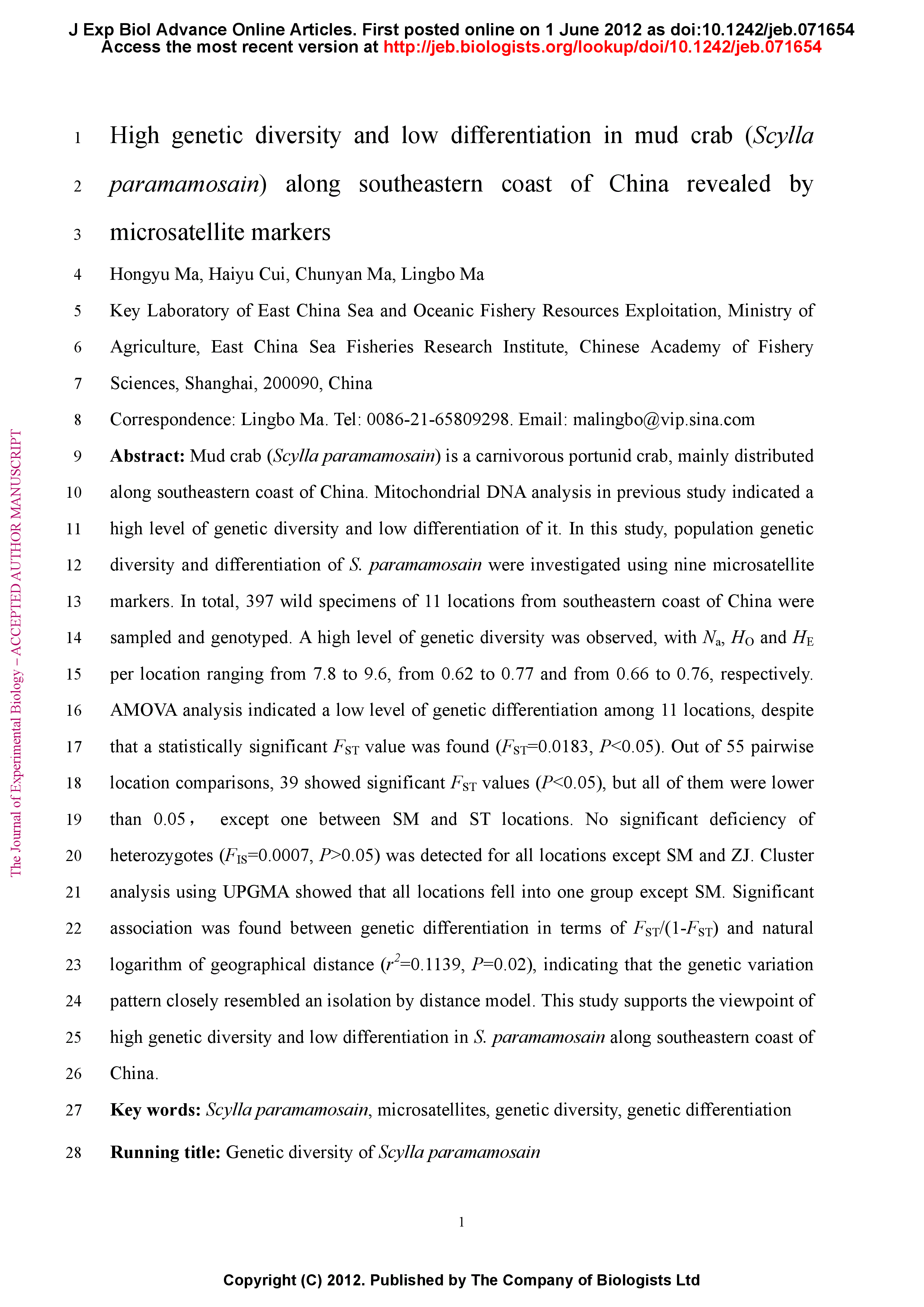Summary
Mud crab (Scylla paramamosain) is a carnivorous portunid crab, mainly distributed along southeastern coast of China. Mitochondrial DNA analysis in previous study indicated a high level of genetic diversity and low differentiation of it. In this study, population genetic diversity and differentiation of S. paramamosain were investigated using nine microsatellite markers. In total, 397 wild specimens of 11 locations from southeastern coast of China were sampled and genotyped. A high level of genetic diversity was observed, with Na, HO and HE per location ranging from 7.8 to 9.6, from 0.62 to 0.77 and from 0.66 to 0.76, respectively. AMOVA analysis indicated a low level of genetic differentiation among 11 locations, despite that a statistically significant FST value was found (FST=0.0183, P<0.05). Out of 55 pairwise location comparisons, 39 showed significant FST values (P<0.05), but all of them were lower than 0.05 except one between SM and ST locations. No significant deficiency of heterozygotes (FIS=0.0007, P>0.05) was detected for all locations except SM and ZJ. Cluster analysis using UPGMA showed that all locations fell into one group except SM. Significant association was found between genetic differentiation in terms of FST/(1-FST) and natural logarithm of geographical distance (r2=0.1139, P=0.02), indicating that the genetic variation pattern closely resembled an isolation by distance model. This study supports the viewpoint of high genetic diversity and low differentiation in Scylla paramamosain along southeastern coast of China.








